ADVERTISE!
A lot of people hear the word "advertise" and think of more traditional advertising formats, like billboards or magazines or commercials - all generally inaccessible to the average person. But there are a lot of different ways to get the word out about your services that don't require huge projects or expenses. One of the simplest and cheapest ways to do it? Your own appearance! I've had colorful hair for a couple decades now, and any time anyone said anything to me about it - good or bad - I took that as an opportunity to give out my business card. I even gave one to a sheriff that pulled me over one time (I was driving...too slowly, lol). Any time anyone wants to talk to you about your hair, or about anyone's hair, really, that's the perfect time to mention your job and make a connection. Make sure you keep business cards on you at ALL times! And make sure to include your social media handles on them in addition to a name and business phone. Which brings me to another advertising option - social media! While you CAN pay for sponsored posts on social media, this is rarely necessary. The primary function of having, say, an Instagram account, is to create a portfolio of your work. Sure, you can TELL people you're great at color, but wouldn't it be better to SHOW them? People are highly responsive to photos, so having a quick and handy resources to whip out or to direct them to from your business card is a great way to leave a lasting impression. Try to make vivids the focal point of your page - you WILL attract what you put out. Yes, this is tough when you're not doing a lot of vivids. That's where having models comes in. Find a couple of "house models" - regular models that give you a lot, or complete, creative freedom to regularly (approximately every 4-6 weeks) create content in exchange for free hair services (teenagers and college students are great options for this - they are adventurous, young and beautiful, and broke, so they will love this arrangement!). Make their hair colorful to your little heart's content, then do a few different styles on it - straight, curled, braided, half up/half down, and maybe an updo or two if you're any good at them. Take a bunch of pictures of each style from multiple angles (looking straight ahead, from a 3/4 angle, looking over each shoulder, looking up, etc.), and BOOM, now you've got a ton of content to load up your portfolio. It's okay to share the same hair more than once! Once you start getting vivid clients, do the same with them if they are comfortable with it. Make it part of the appointment time; allow about 30 minutes afterward to take a bazillion pictures so that you have plenty of portfolio padding until you start getting a regular vivid clientele. You can also use your models to bring in clientele for you. Make sure you mention in your deal that part of getting the free services means also helping spread the word! Give them a stack of your business cards to keep in their purse to hand out, and make sure they are familiar with your social media handles so they can make sure to mention them if necessary. People always wanna talk to you when you've got vivid color, so make sure they are stocked up with ways for commenters to get ahold of you! Even those people who comment who may not ever be a client (and this includes those making negative comments) probably know someone who WOULD be a client. Maybe that little old lady in line at the grocery store has a grandson who would like hair that matches his favorite football team...you just never know! You also may make an effort to hang out where your market is. Even as vivid hair becomes more mainstream, the main demographic for it still largely consists of younger females, creative types, novelty seekers, and the like. Sure, you might see them here and there when you're out and about, but what about if you attend a Final Friday type art event? How about concerts - even small local bands and musical events? Bookstores, college campuses, art museums, festivals, and basically anywhere else you might run into the younger and quirkier artsy people in your area. Yes, this is a generalization, and doesn't mean other people can't or won't get colorful hair, which brings me to my other tried and true strategy: USE YOUR EXISTING CLIENTELE! You wouldn't believe how many people are out there that are secretly a little weird. But it can be really scary to deviate from the norm, to flip the bird to conformity, so most people don't do it. We hear little comments about it all the time: "Oh, I wish I could pull something like that off", "I'm not brave enough", "Maybe if I were 20 years younger...". This is your opportunity! These people are signaling that they are actually already open to the idea, but they are a little nervous about it. And what is making them nervous is that they are probably envisioning something incredibly dramatic compared to what they currently have, and it's my personal belief that any sort of huge dramatic change can be really stressful, even if it's exactly what we want. So the key to this is baby steps. What does that look like? Well, it's not that complicated really - when they make these sort of comments, all you have to do is plant a little seed and say, "You don't have to do the whole enchilada! You can always just get a tiny peekaboo streak of your favorite color to feel it out..." Now the conversation is probably going to get a little more interesting! They've just been given an option that they can feel more comfortable with. Almost every person I've ever said this to has never considered a minimalist approach, and almost all of them are immediately willing to try it once they've considered it. If they are already highlighted or balayaged blonde, even better - not only can you just sneak a streak in during their 'normal process, but they are already getting a level of color maintenance that won't be a huge adjustment should they decide they actually want to continue getting vivids. In these instances, you can say something like, "Let me do a one time complimentary streak of the color of your choice, and if you hate it, it will just wash out back to your blonde. But if you love it, we can keep it up or maybe even try a different color next time." Almost EVERYONE is down to at least try this. And a huge percentage of them will not only keep the color, but they also tend to get increasingly adventurous over time. Once they discover that they actually really like it, in addition to getting some positive feedback from their significant other/friends/family (that is, it doesn't turn into the big rejection fest that they were initially afraid of), they often begin requesting adding more colors, or trying out coloring all the tips, or putting in pieces in more visible sections, and so on. It won't happen overnight, but if you give it a little time and develop a few some client growing habits here and there to help yourself out, you can get the clientele you want!
1 Comment
Now that vivids have gotten popular, I am finding that this issue is becoming a huge one, so I'm gonna address it in one short and sweet post. There are a ton of factors that go into getting good results from your color. Yes, good quality color is a start. But the prep and maintenance are at least as important!
PREP: -Lighten hair to the correct level. The lighter or brighter you want your color to be, the lighter the hair needs to be. For darker tones or oil slick looks, you can be as dark as a 7 for great results. So make sure your base is correct for the results you are trying to achieve. - Did you lighten to white? Is the hair maybe pretty porous? Is it maybe a good idea to do a porosity filler on it so all the color doesn't immediately fade out? Yeah, try that - it makes a huge difference! -When you rinsed out the bleach, did you shampoo not once, but twice? ANY bleach residue on the hair can mess up your results and make your color splotchy. Give it an extra wash just to make sure you've got a squeaky clean canvas. -When you rinsed out the bleach, did you skip the conditioner? SKIP THE CONDITIONER. You can condition later, after you color it. Conditioner has lipids in it (waxes and/or oils) and these can block the absorption of non-oxidative color. Yes, it will probably be tangly when you get them out of the bowl. Just blow dry those out. Seriously. Your blow dryer can detangle hair. Try it. -Did you dry the hair before you applied color? Dry the hair. Some directions suggest applying on damp hair, but in my experience, this almost always leads to diluted color that isn't as vibrant or long lasting. It doesn't hurt anything to apply it to dry hair and it gives better results, so just do that. APPLICATION: -Did you fully saturate the hair? Don't skimp on this stuff! Glop it on there for maximum vibrancy and evenness. -Give it 20 minutes with heat, then 10 minutes without before you rinse. Heat opens the cuticle, which is great for getting that color in there. But you want that cuticle closed back up before you rinse so all the color molecules don't come sliding out immediately. -Speaking of closed cuticles, make sure you are rinsing with the coldest water you can tolerate! COLD! -No shampoo this time - just scrub really good with both the water and the conditioner. Their hair already got shampooed twice after bleaching. They'll be okay. MAINTENANCE: -Send them home with color safe, sulfate free shampoo. -Make sure they know not to wash their hair every day. Every other day or every few days is fine; this will vary a bit depending on everyone's individual scalp oil levels. -Make sure they know to use cold water to wash and rinse. And when they are standing in the shower doing anything else but washing their hair, clip that hair up out of the hot water! -Make sure they know that lots of sunlight and swimming - in chlorine OR salt water - will strip color out. -Make sure they are using heat protectant products when they heat style - this can also fade color. -Make sure they understand that they are spending A LOT of time and money on their hair, so taking care of it when at home is the best way to maximize that investment. It also makes you both look good - they have good, long lasting color, and you look like a competent stylist whose clients trust them. Win-win! 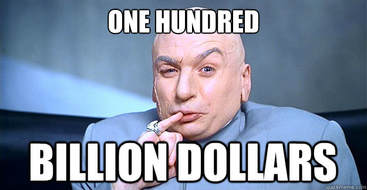 As your social media numbers grow, so do the numbers of people who see you as an opportunity. Some of them see YOU as just a number - a number that can benefit them. And many of those people do almost nothing to hide how much they want to use that for themselves, for their own benefit. I get increasing numbers of offers for things, but I turn many of them down. Sometimes, it’s because I don’t like or use the product being offered. Other times, I just don’t like how the person approached me about it. If they are pushy, abrupt to the point of rudeness, or they seem as though they are being deceptive, I’ll often ignore their messages. I’ve reached a point where I can be choosy, and when someone tries to tell you who they are the first time - listen! So if someone rubs me the wrong way right off the bat, I go with that gut feeling. I do recognize that I’m very lucky to be able to just walk away from the majority of these messages. But I also see lots of people jumping on opportunities that aren’t really right for them, almost out of a sense of desperation, and I see other people becoming almost predatory in their pursuit of trying to grow their business. I’ve been thinking about it a lot, because it seems everyone is trying to do a side hustle these days; the current economy just about demands it. What I’ve observed is that there are definitely some do’s and don’ts I see as I develop my own side hustles and work alongside other successful side hustlers. So here are my thoughts on the matter; as usual, your mileage may vary, but this is what has worked for me and many of my successful associates (and the opposite is what I’ve seen in people who can’t seem to get anywhere, or they do and then crash and burn HARD). I have often said that it’s many of my relationships that have given me the opportunities I’ve benefitted so much from in this industry. It’s true - the relationships 100% matter. I typically seek out the relationship for the sake of the relationship - I loved that person’s technique, so I watched their videos about it and then engaged with them when I tried it out myself. I liked how that person explains things on stage at hair shows - they are relatable and easy to understand, so I sent them a note saying how much I appreciated that. And other things like that - where I reached out to people, or they reached out to me, out of a genuine appreciation, with a genuine question, with a commonality that we bonded over. It’s just about always an organic process: unplanned, spontaneous, and genuine. And then, perhaps down the road, after I’d become actual friends with that person, an opportunity might arise. Perhaps they recommend me as a brand ambassador because they know I use that brand a lot. Perhaps they ask me to teach with them, after we had exchanged several helpful ideas with each other that improved our businesses. Perhaps I get that promotional contract because not only was my work good, but I spent extra time with some of the people helping them out at an event, and enjoyed them so much that I contacted their bosses to let them know what wonderful employees they have. The point is, it’s about the relationships. You develop the relationships first, because you’re dealing with other humans who want to be appreciated as much as you do. You develop the relationships because having good friends and supporters is part of a good quality of life. THEN, perhaps you might be privy to extra opportunities, because you’ve done a good job at your work, and you’ve done a good job of being a decent human, so people want more for you, because they like you, and they wanna help you out. But you don’t go for the opportunities first. Because then it just seems like it’s about the money, and people don’t like to feel used that way. Build the relationships first, and trust that the opportunities will come later - they will find you. There’s nothing wrong with being ambitious. But don’t expect others to help you. Don’t be entitled. Nobody likes that, and honestly, do you really want people being loyal to you because you guilted them into it? Because you applied so much pressure, and they were too nice to say no? Because you think you deserve it just because you asked before putting in any time or effort? Is that REALLY a good way to build a strong foundation of support, whether financially or emotionally? People don’t stick around for stuff that makes them feel bad, and guilt and pressure are unpleasant, especially when they are unnecessary. In particular, people don’t like feeling like they are simply a rung you step on as you climb the ladder to success. That strategy may work temporarily, but in the long run, those people won’t be there for you when things fall apart; they may even come to resent you and revel in, or even contribute to, your downfall. If you want loyalty and support, do it the old fashioned way. Do YOUR part, and do it really well. Try to truly better yourself on a personal and professional level, and not just in your bank account. Appreciate people, listen and learn from those who know more than you, try to grow in every direction. This will bring the right people to you. The right people not just for your job, but for YOU. For your life. And then you win anyway, no matter how much money you’re making, because you have so many great connections. Science has shown us that that’s what actually makes us happy and content, anyway. But truly, it becomes real hard to fail when we have that safety net, because you have so many people looking out for you. The relationships can help build you up in every direction. So don’t skip that part. So some interesting events happened in my industry (hair) this last week and it brought many things to my attention, things that I realized there isn’t a lot of knowledge or discussion about – or at least that’s what it looked like from the way people were talking about them. I won’t go into details regarding which specific events I mean, or what exactly happened that led to these discussions, but I WILL say that I’m willing to share some of my own knowledge because it seems needed. A particular person was basically having her entire person and character questioned because she is a social media influencer. And it appeared that it was being questioned simply because there was very little understanding regarding what it means to be an influencer, and there was the implied suggestion that she is automatically some sort of con artist simply for having an influencer title and capabilities. Now I am not super great buddies with this person. We know of each other, and have met a few times, and we do similar sorts of work. But she has a MUCH bigger following than I do, so she is more well known and has more industry status than I. Regardless, I, too, have become an influencer myself somehow (not what I was setting out to do), and I wanted to share what I know about the job from my own experience. I am sure there are many other things to learn; at this point, I’m basically winging it because that’s how I live my life. Additionally, this whole influencer thing is sort of new with social media, so I think the rules and options are always evolving, especially as media platforms grow and adjust algorithms. So what is an influencer? Well, they influence. See, easy! Just kidding. That’s actually not an inaccurate description, but how does it work? Well, when you have a bajillion followers, you have what’s called a market – people who are already interested in your work. It’s a built-in audience. In my case, I do mostly weird shit, like paintings and patterns on hair. Was anyone interested in that before? I dunno, probably mostly not. But you get a few articles written about you, which gives you some exposure, which sends a stampede of people to your social media pages, and now a lot of people are into it. Now people WANT it – people who probably didn’t want it before. Now there’s more demand for my services. Cool! My social media, along with other media outlets, allowed me to influence the amount of demand for my work. Naturally, what this means is that a lot of people also want to know HOW I’m doing the work. What’s my technique? Are there specific strategies? What sorts of brushes do I use? What kind of color is that? What works best for this stuff? Now, there’s demand for knowledge and tools. I can provide the knowledge – this blog and my tutorials. But I can’t provide the tools. And this is the part where people start to get funny about all this stuff. I use anywhere from 10-20 different product brands to do weird shit, from the color to brushes to bowls to foils to meches to hairspray and god knows what else I have to have in order to make this crap. I have used various rainbow colors on hair for two decades now, so I have a ton of experience and brand knowledge regarding things like staying power, color bleeding, coverage, tonal values, mixability, workability, and all the other stuff you pick up after 20 years of playing with hair paint on clients. This allows me to customize my service for each and every one of my clients, to meet their specific requirements regarding maintenance, budget, color preferences, and all the other factors that hair colorists take into consideration every day. So sometimes, when people ask me about what I’m working with, I tell them what and why. Of course some product brands have picked up on this. They’ve noticed that I might consistently recommend them or say good things about them in such a way that many thousands of people see it every day. I give them exposure, potentially to markets that they were not previously reaching. Sometimes, just to say thanks, they might send me a few samples. Some just start providing me with product regularly (also known as sponsorship) so that I don’t need to buy it anymore. And some want contracts for me to do projects specifically with their products, which can often pay in cash – on the condition that I share the work on my social media and discuss what I’m using. And this is where people lose their shit. When the person who inspired this post was shown to charge money to work in much the same way, people started tearing into her, assuming that she must automatically be dishonest because she is “paid for her opinion”. I found this surprising for a number of reasons. First of all, while being a social media influencer is sort of a new job, advertising isn’t. We get advertised to all the time. Is it always dishonest? I dunno, is it? How do you find out if the claims advertised by a product are true? Maybe you ask around, read reviews, or take the risk and try the product yourself. Maybe you’ve tried other things by that company and they did or didn’t work well, so that influences how likely you are to use them again. Maybe you’ve heard unsavory things about that company, so even if their products are good, you don’t wanna support their business. There are a LOT of things that help us decide what to buy. But here’s the thing – something that doesn’t work at all isn’t gonna last long on the market. People figure it out and word gets around and if there aren’t sufficient sales, then the product gets kicked out of the market. Yay free market system! That company now has a bad reputation, assuming they can even keep their doors open. This applies to influencers, too. We take on that same risk when we decide which stuff to promote. In my case, I actually have to use this stuff on my clients, who are still my bread and butter. I need to continue to make them happy and provide good results with my service. I can’t use crappy stuff on them – I have to use what works. I also like my job to be as easy as possible, so my clients may not care about the way some of my tools help me out, but I do, and so do other stylists. So in terms of sponsorships, what am I gonna do with regular shipments coming in of product I can’t use? Why would I be motivated to keep promoting product that will just sit in my closet? No, if I’m going to take a sponsorship, I need stuff that I can utilize, or else it’s not helpful at all. It makes no sense to take on a sponsorship to promote stuff I don’t use and love. Which means I actually turn down a lot of offers. It just doesn’t make sense to take them on when there’s actual good stuff out there that I’d rather use and share. But what about cash payments? Isn’t everyone motivated by money? Sure, money is great. But let’s think about this a little bit. If you’re a stylist (or honestly, in any kind of business), how did you build your clientele? How do you make your money? Probably through consistently delivering quality work, with quality product, and developing a good reputation that got you referrals. You had to show up and kick ass regularly. No faking. Same deal for influencers. We have reputations on the line. We got our following by establishing credibility much the same way we did in the salon – good work that is consistent, and in my case, also providing usable knowledge to fellow professionals that can help them perform better, too. I look like a dumbass if I provide bad information. You think no one is going to notice that? You think that’s not gonna hurt my credibility? What are the long term effects of that? That’s right, you lose trust in my brand. You don’t wanna follow me anymore, or you can’t take me seriously. I lose influence. This is bad business. There can be short term gains for getting paid off to use and/or promote ineffective or bad product, but the long term story is different. If I lose influence, I lose more money down the road. I lose professional credibility, not only among clients and followers, but also among my peers. This can hurt, and even ruin, my career. I want to be taken seriously, not only because that’s important to me personally, but because I still have a long time to go in this industry, and I have bills to pay like everyone else. Hurting my own credibility can damage my ability to do those things. I have a responsibility to maintain follower and client trust if I want to continue to have effective and profitable branding. And consider this. Imagine you have worked hard in your career to build your skills, provide the best work possible, and create a solid reputation that people trust. YOU did that. And then it just so happens, the internet notices and throws a bunch of followers your way. Maybe you’ve even researched and strategized for building your market, which is no small feat and often practically a second job in and of itself. And then someone comes along and wants some space on your social media platform. They want access to your followers and market. They want a spot dedicated just to them, based on all the work you’ve already done, the skills you’ve developed, the mistakes you’ve already made and learned from, the practice and continuing education investments and experience. Do you give it up for free? Maybe, if you really, really want to. But what if they offer to pay you to give that space up, AND you’re already using their stuff anyway? Would you really, honestly, turn that down? Are they entitled to that space just because they asked for it? Why can’t they use their own space? Why are they even asking you? Because they have determined that you have something that they want – your knowledge, skill, followers, reach, and market - and that now makes you valuable on some level. The free market strikes again! So of course you are going to leverage that value if you can. You’re not a charity, you are a business.
We also must take into account how other advertising and education works in the hair industry (and many other industries). We have brand educators coming at us all the time, whether through our beauty suppliers, hair shows, online, and everywhere else. Now, we take them seriously - and we should! They have learned all the ins and outs of their brand and the product lines and the way to best maximize the results they can provide. Do we denounce their credibility simply because they are paid to do so? No, not typically. We respect their knowledge and experience and consider them experts in their particular field. The same can often be said of influencers who may be formally trained or, like me, have learned through experience and a lot of trial and error - but we have no specific loyalty or requirement that we use only a certain brand. We can choose whoever we want to promote, and we have no obligation to say anything one way or another, because we are usually independent contractors that make those decisions entirely free of any ties to a particular company or brand - except our own. Now, are there going to be some people out there that will advertise anything for money? Sure! There are always cheaters in every system. But they are usually few and far between, and they almost always get caught, especially now that information is so easy to exchange online. People can easily compare notes, take screenshots, and all the other wonderful and awful things that the internet allows. These are just more incentives to be honest with product promotion. My point is, we can’t assume that someone being an influencer automatically means they are blowing smoke up your ass. Influencers have very strong incentives in place to keep them pretty honest. If they have built a relationship with their following and they’ve been consistent providers of good information, then that will very likely remain the case even once they start getting paid for their knowledge and skillsets. We are just regular people - not marketing teams who are disconnected from their market base - and that is one of our strengths. But like with any type of advertising, consumers must do their own due diligence, too. And there IS some inherent risk in that. Shoot, even a great product that works for 99.9% of people might still not work for you. But the only way to find out is to do the research and try it out for yourself. I get a lot of questions about this in the summer with my color clients: “How do I keep my summer activities from destroying my color?” To which I reply NEVER LEAVE YOUR HOUSE. Just kidding. I mean, that’s my strategy, but for those of you with actual lives, here’s a few tips to maintain your fabulous rainbow locks…
Hope this helps! If you’ve discovered other helpful hints or products, mention them in the comments below! I'm not going to write about being angry or sad or homophobia or guns or mental health or Islam or any of that. There will be plenty of that. I think in tragedies like this one, the victims often get glossed over in favor of an enormous, collective grieving process, where we all frantically try to assign blame in order to feel some sense of control, and we get angry because that's easier than dealing with our tremendous feelings of vulnerability and sadness. In this case, one aspect of the victims' identities is at the forefront, but for the people who cared about them, they were multi-faceted individuals with more to them than just their sexual orientation.
They were all once carried in the bodies of their mothers, who, more than likely, anticipated their births with excitement and happiness. They were once adorable toddlers, with sticky fingers and silly babbling, and school age children playing at recess and doing homework and sitting with their friends at lunch. Fighting with siblings, learning how to play piano or make cookies or catch a baseball, dating and getting their hearts broken, driving a lurching car in driver's ed as they figure out braking, having holiday dinners with grandparents, going off to college and getting their first apartments and maybe still calling their moms from time to time to ask how much soap is needed for laundry, or if they can come home for the weekend to have some of her good cooking. And surely they had their struggles, too. Maybe some of them were dealing with anxiety or depression. Maybe some of them were in the midst grief from their own loss. Maybe some of them had strained relationships with their families, or were repairing rifts from long ago. Maybe some were having trouble making ends meet financially, and perhaps their friends had decided to take them out for a night of fun to forget about that for a while. The point is, they were fellow humans. Regular people. When we forget that those who are "different" from us are still not that different, these things happen. It's so important to keep these individuals humanized - it's important for ALL of us to try to focus on the humanity of others, because that breeds kindness, cooperation, respect, and dignity. And we should remember, more than anything, the light these people brought into the lives of their loved ones. Sure, it's not always "rainbows and butterflies" - but sometimes, it is, and we so easily forget that. I cannot do much. I am just one person, and a highly inefficient one at that. But when an attack on safe spaces has occurred, what I CAN do is let those passing through my inconsequential part of the internet know that this is a safe space for you. And not just for the LGBTQ community, either - humans of any stripe and identity can hang out here and you will be judged according to the content of your character rather than by how you are labeled. So I finished a project yesterday that is sort of my own homage to the victims, but also symbolic of this notion of safety and acceptance. Yeah, I'm absolutely a pie in the sky, bleeding heart liberal, with severe Pollyanna tendencies. But we, as humans, have achieved so much in our short history, that I can't help but focus on that vision for all the other great things we will achieve in our future, especially when I feel small and helpless like I do with this situation. I wish that future was now, and I wish I could make it happen with the snap of my fingers. But I can't. So I just have to paint hopeful reminders as my one small contribution to help remember that vision. Updated June 5th, 2016 So back in December, while I was in the middle of doing Airacha's Van Gogh colored hair, I had an idea. I wondered how hard it would be to actually paint Starry Night - the painting - onto some hair. I thought it might be fun to try painting on hair instead of a canvas (for everyone needing a reason why I do anything). So the next day, I started working on painting it onto a hair weft (a thin slice of hair like that used for certain types of extensions) to see if I could work something out. The original weft I started on was too thick, and I realized I needed a thinner weft, so I purchased one. Then I got distracted by the idea of doing other paintings on the thinner hair, and I neglected my Starry Night project in favor of trying out The Scream, by Edvard Munch and La Reve, by Picasso. And they actually came out...pretty okay. And it was surprisingly fun to do; I started to really enjoy myself once I worked out a few kinks. I wanted to keep going, but got sidetracked by other stuff happening for a little bit. When the Fine Art series went viral, there were more than a few commenters who responded to poorly worded headlines on the subject with statements like, "I thought I was going to see actual artwork on the hair" or "These are just the colors from the paintings, not the ACTUAL paintings" (yeah, no duh, but I'm not the one who wrote the headlines suggesting otherwise, am I?). I wanted to point out that I was actually working on exactly what they were complaining about, but figured I ought to do a few more before I put them out. Plus, who cares about what gripey commenters want? I also wasn't sure how well they'd turn out, and didn't want to promise something I couldn't deliver. So I continued playing around with the idea, discovering that it was a bit trickier than I originally thought. I spent a lot of time looking through art books and thinking about what sorts of things I like to paint, trying to decide what would be the most fun and interesting to do. *Side note: I don't think my own original art is terribly interesting to anyone but me, and my best skill set lies in realism/photorealism - which basically means I'm good at copying things. So that's why I felt like it was more fun and interesting to reproduce other artists' stuff. My own art is mostly for me or people I'm very close to. No, I don't do commissions. No, I don't sell my own art. If you get art from me, it's because it burst out of my brain specifically for you and I wanted you to have it. Which is also why I don't have a thriving career as an artist. When I mentioned to a friend that I was considering a Kandinsky reproduction, he thought I was being too ambitious. So then of course I HAD to do it. Then he suggested that I do a Rothko, since he was a fan, and so I encouraged him to pick one out for me to do. And then it just kind of kept moving forward. So now I have completed several, and am working on a couple more, and have ideas for a few more that I haven't started yet. I think I'll work on them till I get bored. I honestly haven't painted this much in years, and it feels good to be productive, even if it's on a silly project like this one. I've also learned a lot about each artist and their style in the process of doing the paintings, and that has been a cool and unexpected side effect; I feel more appreciative of their work and process now. Some of the pieces I tried to copy as closely as possible, some I took some creative liberties with. For instance, it wasn't practical for me to place all the red dots on the Lichtenstein(?) as close together as they are in the original, as the red dye would have likely bled all over the damn place and it would have looked sloppy. And I started "Starry Night" from memory, as I've painted it numerous times, and so the composition is off a bit, although I ultimately corrected a lot of it. Some of the pieces I did a very basic sketch or outline and then worked from that, but for a couple, like the Kandinsky, I did my own full reproduction on paper first and then used that to work from. I used actual hair color; mostly direct dyes but I did use permanent colors a few times for specific effects. I used multiple lines, including Manic Panic, Kenra, Joico, Redken, Rusk, Pravana, Ion, Adore, and Arctic Fox. I typically watered them down a little, and then applied them to blonde hair with a paintbrush (mostly sable, like the same ones you use for painting anything else). I freehand them - no projectors and NO STENCILS. I lay a drawn or painted mock up underneath to sort of "trace" it - but like I state above, I've drawn or painted the mockup myself. That's it. That's my process. 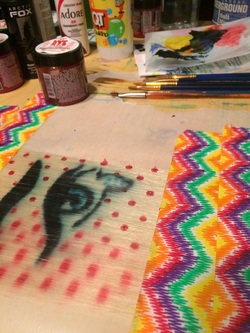 My work area. I hijacked my son's desk behind the couch. This annoyed him to no end, as it seriously interfered with his Minecraft gaming and poisonous snake research. In this case, I thought I was working on a Lichtenstein, but my research has not yielded whether or not this was actually one of his pieces. Regardless, I finished it anyway and liked the outcome. Does anyone know the original source for this? If so, you might mention it in the comments and post a link to your source, please and thank you.  The very bottom left photo is the (sideways) watercolor reproduction I did of Wassily Kandinsky's Color Study: Squares with Concentric Circles, and I used that as my template for the hair, of which the top photo is the final product. It wasn't as easy to paint as I had initially predicted, and I ended up having to plan it a bit more than I thought I would. I REALLY liked how this one came out. I feel tempted to do my own similar color studies because this one was fun to do.
But I decided to give it another chance and work on it just a little more, and then get some pictures to see how it looked on camera. I asked Tessa to model it for me, since we had just colored her hair in roughly the same colors a couple weeks prior. I didn't realize her reds would fade to PERFECT oranges, and that the steely color we had added at the roots and tips would match the discordant tones of the painting's color palette so well. Once her hair was styled with the piece in, I started to really love it. I still love it. I think it's totally my favorite. Here's another pic because I just love it so much. UGH. This damn thing. This one was really hard. But I love Van Gogh - LOVE HIM - so I had to do it. FIRST OF ALL, obviously, Van Gogh's painting style is a real pain in the ass to do on hair. I still don't feel 100% satisfied with it, and I may keep playing around with this thing. I probably painted and repainted the sky maybe 4 times? It's a lot like watercolors, where you have to utilize the white of the paper (or in this case, the hair), for lighter colors and whites. There's no "white" hair color, technically. Like, if I color a spot blue and then decide oh crap, that should have been white (or light blue, or yellow, or any color lighter than blue), I can't just go over it with light blue or white or yellow hair color like you could with, say, acrylic paints. So it takes a lot of careful planning and you have to sort of start from light to dark, gradually filling in darker areas with color and just...not really touching the lighter areas, or being very, very careful with them and working around them, the way you would with watercolors. Second, I will probably also get other photos; this one was the first one I put in hair, and I honestly had no idea where to start or what to do with it - I was just sort of winging it. I've since straightened out and cleaned up that bottom edge, now I just have to...I dunno. Something. So. We will call this one a work in Progress.
So of course I had to do a Warhol. I love his Marilyn portraits, and this one kicked my butt. Her face was very difficult - the individual parts of it were so small and detailed that I was not able to reproduce them as well as I would like, and so she's not quite perfect. I also did it a bit like Warhol would have - I did each color in its own respective section, like you would for screen printing, and then ultimately went back over it with black to fill in. And then it matched my neon rainbow extensions really well, so that's what I modeled it with. If you wanna see the originator of the Faces in the Hair idea, check out DJ Victory's website at djvictory.me. She also has had some other amazingly innovative ideas, like stained glass hair and tie dyed hair, plus, she is a super sweet and genuinely nice person. I've got a few more I'm working on, and a few more I'd like to do. So I will update this post with new developments as they happen. Also, thank you to my models - Shelby, Katie, and Tessa. They are all existing clients of mine, and generously donated their time and hair for this project simply to indulge me, and also because they are awesome friends. I'd have no career to speak of without them! Update:
For something a little different, I decided to give Banksy a shot. I tend to really like most of his stuff, but the bigger challenge here, for me anyway, was the simplicity. I wanted to see if I could make it work without having to fall back on color to make it eye catching. Being such a detail junkie who easily and happily will overwork everything, this presented a unique issue for me: it only took a few minutes to paint, and then it was done. My brain didn't know what to do with that, and I hemmed and hawed about it at my desk after it was completed, wondering if it needed "more". It took a tremendous amount of self-restraint for me to stop here, but I'm glad I did - I think it makes a pretty good impact as-is. Plus, it got me another nomination in the Behind the Chair magazine one shot awards, so that's cool.  I had originally posted this in February, then pulled it once it went viral in order to put the brakes on things and feel in control of my life and my content again. Now that things are back to being pretty dead, here it is. I feel like I can handle things now a little better, regardless of what happens. So here's some stuff, with the original commentary. I often get asked where I went to hair school, and what sort of cosmetology education background I have. The answer is probably disappointing for most people - I went to a community college Cosmo program and have almost no other training outside of that. However, I have done art since I was 5, first developing hand skills as a sketcher, and then expanding those skills into color by working with acrylics, tempera, and especially water colors. I tend to color hair much the same way I color a canvas, using the same sorts of color application techniques and identical color theory. So in honor of my art background being so useful, I thought I'd do a Fine Art series, similar in concept to the Starry Night/hair presentation I recently did. Today, I'm sharing the work of Norwegian artist Edvard Munch. His work tends to fall under the Symbolism category, and this is his most well known painting, "The Scream", which has a bit of an unusual color palette, which I think contributes to the emotional discord of the image. I tend to very strongly agree with Munch's art philosophy: "I do not believe in the art which is not the compulsive result of Man's urge to open his heart." Many things I make simply because they are pretty, but my favorite pieces force themselves out of me in surges of emotional energy. Without art, I think I'd be far more dysfunctional, as I would struggle to express myself in other ways. Next in the Fine Art series is Girl With a Pearl Earring, by Dutch painter Johannes Vermeer. What is interesting about this color palette, along with many other Vermeer works, is his almost grandiose use of the blue tone (probably ultramarine), which was unusual at the time for artists, as it was a VERY expensive pigment, and Vermeer was not known to have made a lot of money in his lifetime. This pop of color against the warmer brown tones of the rest of the canvas give the painting a sense of newness, contrasted with the duller tones of most other paintings in the 17th century. It's also an excellent study in light and shadow, which Vermeer had an uncanny ability to recreate (it's been suggested that he may have had some help on that with camera obscuras or similar optics). If you want to see some of the earliest works of photorealism, look into some more of Vermeer's work, particularly "The Art of Painting" and "The Astronomer". Fine Art Series: Andy Warhol may be the most iconic artist of the 20th century. He was fascinated with fame and Hollywood, and is most well known for his silk screen portraits of celebrities, although he also dabbled in other mediums, like film and music, and wrote two books and had his own magazine. His numerous renditions of Marilyn Monroe in various combinations of bright colors may be almost as famous as Marilyn herself, and his background as an illustrator shows in his "as-is" style, where he did not correct smudges or mistakes in his prints, believing that mistakes could be better than perfection. He was sometimes accused of being superficial in his art, but likely didn't mind such a designation, even admitting at one point that he loved how "plastic" Hollywood is, and that he even wished to be plastic himself. He blurred the line between art and consumerism, creating much of his art with the help of assistants on a production line, not unlike that of other commodities, and even named his studio "The Factory". What do you guys think - is it art if it's still mass produced and filled with "mistakes"? Or do the mistakes contribute to the uniqueness of each piece enough that they all qualify as "real" art? Is a print of a Campbell's soup can art? Is art defined by the skill or time involved, or by the image itself, or both? These are some of the sorts the questions that Warhol's work generated, and they are still relevant today. Fine Art Series: This is the famous "Birth of Venus", by Boticelli. This painting is enormous - 6 by 9 feet - and has some interesting history behind it. First off, it was painted in the early Renaissance period (1480's), and it's one of the first serious works ever done on canvas (in tempera, which is egg based paint), as wood panels had been the preferred surface before. More interestingly, it also depicts a fully nude woman who is NOT affiliated with Christianity, which was considered somewhat scandalous at the time. This was probably a reflection of the growing interest in humanism and the re-emergence of mythology in art at the time. However, Boticelli himself is said to have had a nervous breakdown due to his guilt in painting "pagan" works after a fanatical friar briefly gained power in Florence, Italy. The friar, named Savanarola, criticized and condemned "vanity" items like jewelry, books, mirrors, and frivolous art, and even had an event called "The Burning of the Vanities", where an enormous pile of such items was set on fire in the town square! How Boticelli's painting escaped its demise in this event is not known, but his work took a decidedly more spiritual, Christian turn afterwards. This brings to mind questions about censorship - what do you guys think? Should some art be censored? Is some art inappropriate? If so, who gets to decide, and what should be done with inappropriate art? How does this incident compare with more recent censorship situations? Fine Art series: The Kiss, by Austrian Symbolist Gustav Klimt. Perhaps one of my favorite paintings, this work is characteristic of Klimt's gold period, where he did many paintings adorned with gold leaf and warm tones. Klimt's artistic career is a great example of failure being followed by immense success. More than a decade before this painting was done, Klimt received a serious blow to his artistic reputation. He had been commissioned to make three paintings for the University of Vienna. He spent several years on them, but they were not only rejected by the university, but also very heavily criticized for being "pornographic". (Check them out to see for yourself - they are titled "Philosophy", "Medicine", and "Jurisprudence", and were ultimately destroyed by Nazis during WWII. I happen to think they are quite beautiful, and visually interesting, and think it is shameful they were rejected.) Soon after, Klimt spent some time in Italy, which exposed him to Byzantine mosaics that likely heavily influenced his use of gold leaf in future works. This style is what ultimately gave him critical praise which then allowed him to become highly selective about the commissions he took, leading to a very financially comfortable life. His work now fetches some of the highest prices in the art world. I like this story because it highlights that success is often a long road, occasionally punctuated by enormous failure or loss. If you are looking to achieve anything, on any level, then it seems that the absolute best strategy is to simply persist. Keep going. Keep trying. Do you agree? When you look back on your life, do you feel that your failures were necessary stops on the way? Fine Art Series: This is one of many water lilies paintings that Claude Monet painted. Monet is the most famous of the Impressionist artists, who sought to focus on light and movement, often at the expense of form. Initially not well received, the term "Impressionism" was borrowed from a derogatory review by an art critic. However, it ultimately created the inertia that moved art into the modern period, freeing up a multitude of future artists to use freer and looser styles. Monet himself, however, struggled to internalize the influence of his work, battling depression and feelings of failure his entire life, destroying as many as 500 hundred of his own paintings, and even attempting suicide at one point. This goes to illustrate that no matter our feelings about ourselves, we can still have an enormous ongoing influence in the world; perhaps in that sense, there is no such thing as failure. Fine Art Series: Red Canna Lily, by Georgia O'Keeffe, who may be the female artist most people are familiar with. This painting is in the style she is most well known for: large close-ups of individual flowers. However, O'Keeffe herself didn't appreciate the interpretations given these works - most attributed Freudian theories (popular at the time), which of course meant that many assumed these to be representations of female genitalia. Second wave feminists even went so far as to consider O'Keeffe a pioneer of "female iconography", but O'Keefe continued to insist that she had simply painted flowers, and refused to work with feminist groups on any projects, feeling as though her own ideas had been co-opted by other agendas. This encouraged a change in subject matter for her, although she still painted in a characteristic style, using oils but conveying a soft, blended feel more reminiscent of water colors. This change did not harm her career, and she continued to be held in high regard and acquired a moderate amount of fame throughout the course of her life. I think her story brings forth interesting questions about the relationship between art and the viewer: does the artist alone get to control what their art is about? Or does the audience get to have a say? Do we have to accept outside interpretations for art, even if the artist disagrees with them? Is it fair to tell an artist what they may be "subconsciously" conveying? This is one of the fears of putting oneself out there artistically: that you will be misunderstood, misrepresented, and perhaps even rejected - understood or otherwise. O'Keeffe's situation, then, clearly demonstrates the vulnerability of being an artist. Fine Art Series: Drowning Girl, and Pop Art Newsweek cover, by Roy Lichtenstein. Lichtenstein was a pop artist in the 60's, most well known for his not-quite-exact copies of actual comic book panels. There is still debate in the art world as to whether his work can be considered original, or if it's flat out plagiarism. Some insist that such "borrowing" would never fly in any other genre, especially music; that permission and credit must always be given in order to use someone's work. Further, Lichtenstein made enormous sums of money off of these works, while the original artists were often not paid well at all, and many regularly experienced financial hardships. Others say that Lichtenstein took what was considered "low art" at the time, and elevated it to fine art status, immortalizing work that many people would normally never see or appreciate. In fact, the comics industry at the time rarely gave artistic credit to its illustrators, and many comic artists even voluntarily declined having their name attached to their work, likely due to the stigma that it wasn't "real" art. There may even be merit to the argument that without Lichtenstein's work, the comic industry may never have evolved into its current massive (and appreciated) status. However, I think that could have happened even if Lichtenstein had given the original artists credit. What do you guys think - was Lichetenstein doing the comics industry enough of a favor that he didn't owe them any compensation or credit? Or should credit always be given regardless of the outcome? Fine Art Series: This is only one piece of a rather large body of work completed the last two years of Van Gogh's life, and Van Gogh himself was not impressed with it, never having any inkling that it would go on to become one of the most recognized pieces of art in Western history. He began it shortly after being admitted to the St. Rémy de Provence asylum, and it's largely composed of the view from his room, with the addition of a fictional village. Earlier in life, he had been very religious and had set out to become a pastor, but could never pass his exams and he struggled with his mental health continuously. He later abandoned religion, but still seemed to be searching for meaning and purpose, speculating that "hope is in the stars" - referencing the desire to experience an afterlife, perhaps in the stars or in another dimension. This desire stemmed from the fact that he had never been particularly happy, and suffered from depression, hallucinations, delusions, psychotic breaks, and a general inability to function, often trying to live and work on his own, but always failing, which would result in admittance to an asylum or going back to live with family or friends. He ultimately took his own life at age 37, dying from a self-inflicted gunshot wound that became infected. It could be argued that Van Gogh's mental illness fueled his creativity and made him a great artist, but even if that's true, his story is heartbreaking. It's hard for me to gauge if his enormous contributions to art were worth all the suffering this poor man endured. It's commonly believed, however, that suffering and art go hand in hand. What do you think? Fine Art Series: Dancer Tilting, by French painter Edgar Degas. Famous for his many paintings of ballerinas and women at work, Degas was a major organizer of the Impressionist movement - even though he hated almost everything the movement stood for and eventually fell out with most of the artists involved with it. He found himself relying on art for his primary income after his father died and he discovered that his brother had an extraordinary amount of debt, forcing Degas to sell off a good portion of his wealthy family's assets to pay it off. He began putting together Impressionist exhibitions as a means to sell his own art, while also mocking the impressionists' spontaneous style and tendency to paint outdoors. Degas' work, while similar in some ways to Impressionism, also took cues from Japanese composition, photography, and extensive study of its subjects - but he still managed to convey a feeling of spontaneity despite his many drafts and meticulous detail in his work. However, his work also bears the trademark bright colors and interesting light schemes of Impressionism, so despite his reluctance to be included in such a group, it is really the description that fits best for his style. What do you guys think - would you ever get involved with something you despise in order to pay your bills? Or are some things more important than money? How do you weight the balance? Woman Encircled by the Flight of a Bird, by Spanish painter Joan Miro. This painting is actually part of a series of 23 paintings Miro did, referred to as the Constellation paintings. All of the paintings are composed of a variety of shapes and black lines, largely colored in with primary colors on a neutral background. This series was begun at the outbreak of WWII, after Miro had fled first from his home in Paris to Normandy, and then continued after he and his family were forced to leave France altogether and relocate back to Spain due to the German invasion. Miro himself said these paintings were his way of escaping the war, and finding something else to immerse himself in; "...It was a liberation for me in that I ceased thinking about the tragedy all around me." These are considered some of his greatest works and the Museum of Modern Art in New York even assisted him in smuggling them out of Europe even as he himself was trapped. The above quote about this series speaks to me personally; I grew up in a very difficult home and often escaped my own reality through books and drawing. I think it's one of the more interesting features of humans that we can experience great difficulty, and in our attempts to rework those difficult times into something manageable, we can create great works of beauty - sometimes even our greatest works.
So I guess I'm going to give this color educator thing a go. Meet me in Phoenix, AZ, on March 20th, 2016!
So, much to my surprise, Modern Salon magazine contacted me on my Instagram today about publishing a how-to for Miss Haley's most recent rainbow madness. I thought that was pretty cool, so I shared my strategy for how I did her color. Check it out at the link: http://www.modernsalon.com/inspiration/how-to-short-spunky-rainbow-haircolor-styled-6-ways
|
Sometimes, I write.
Various brain regurgitations will go here. Categories
|
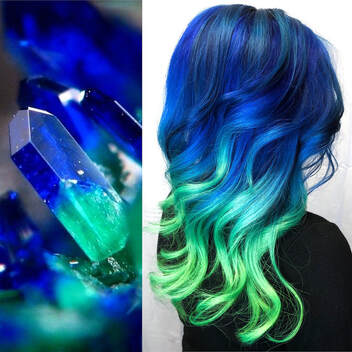
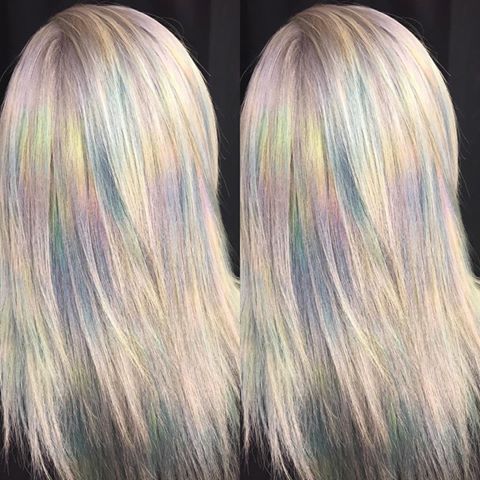
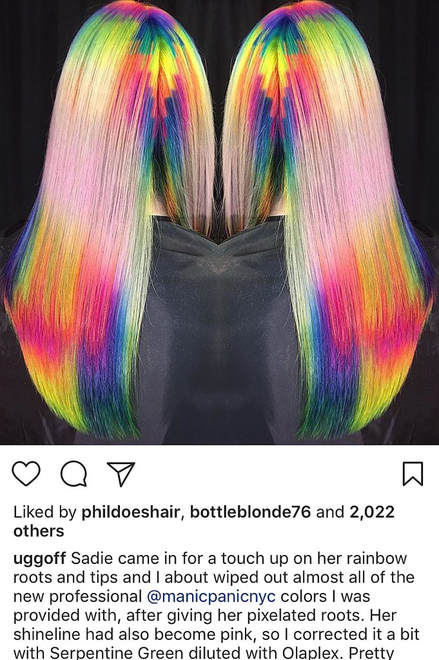
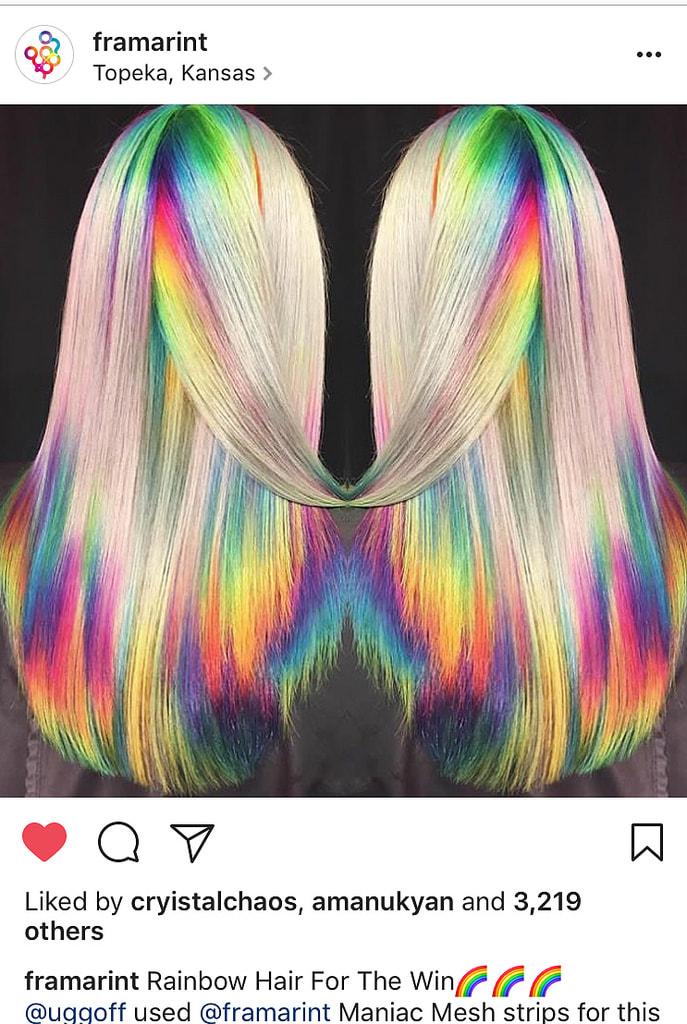
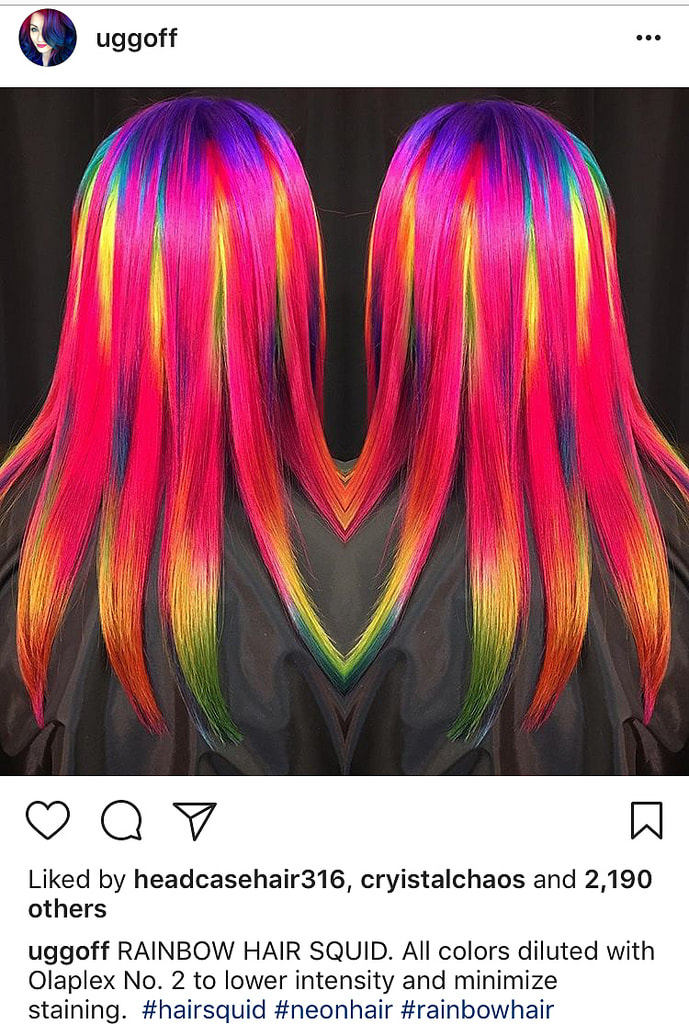
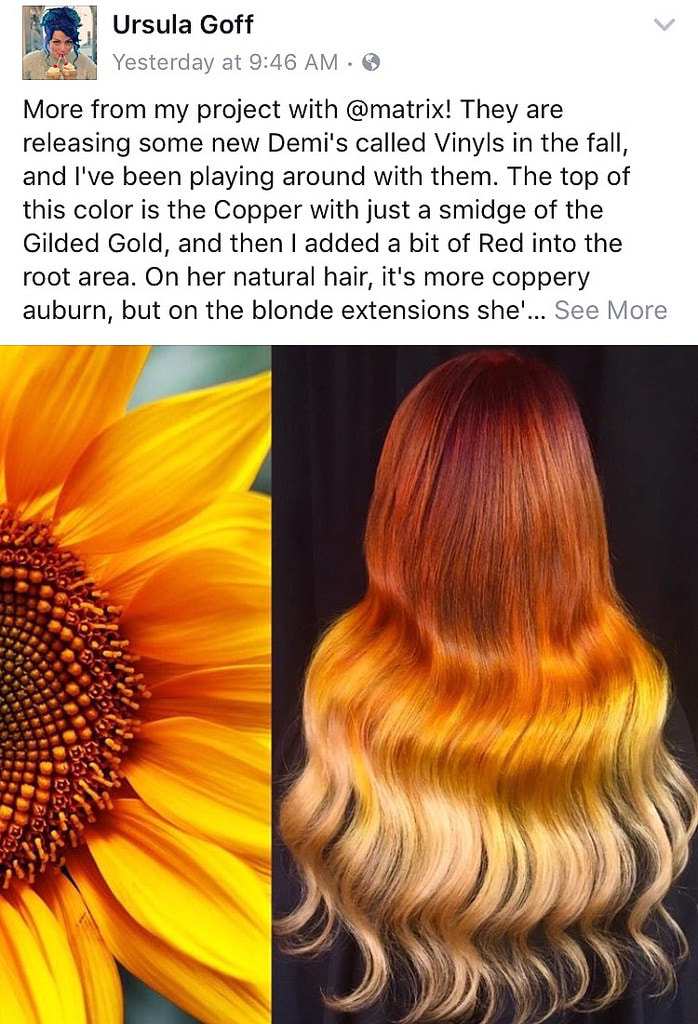

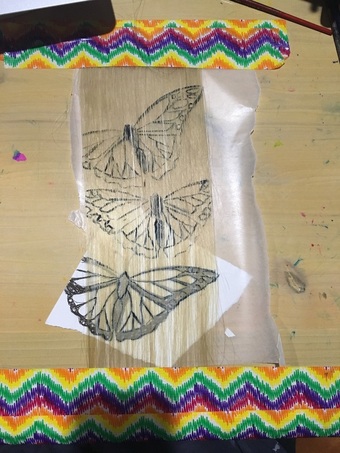


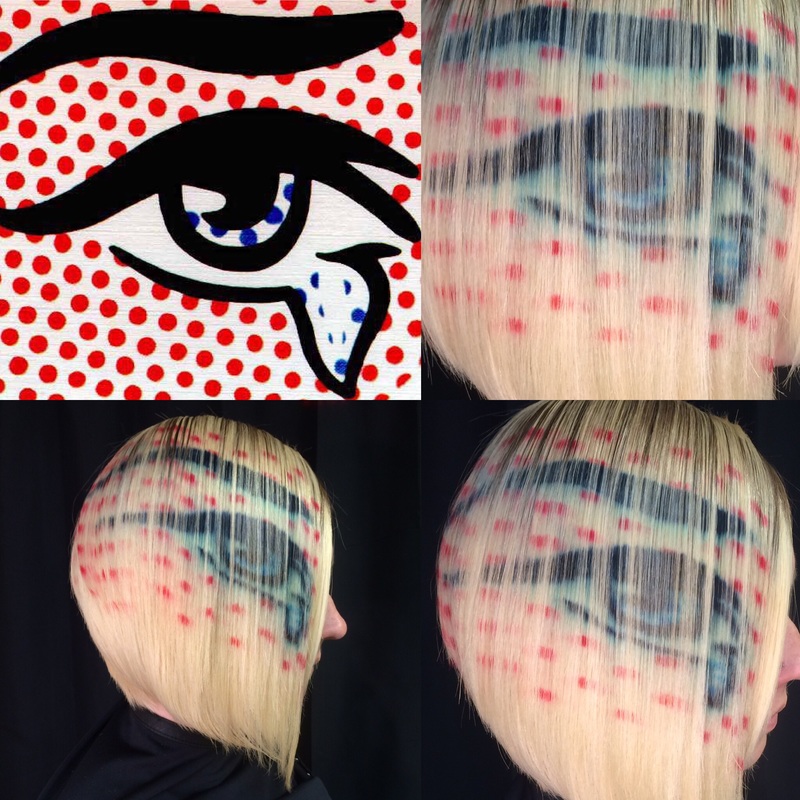

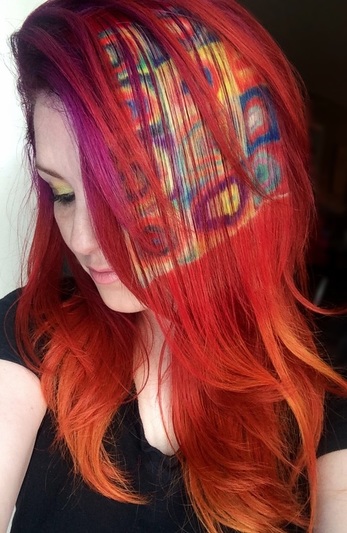
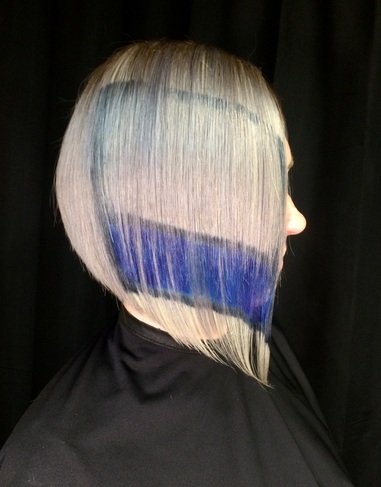
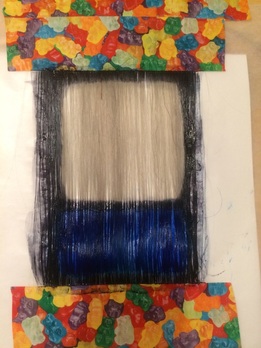

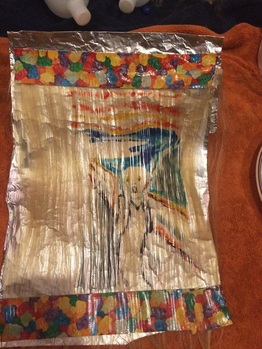



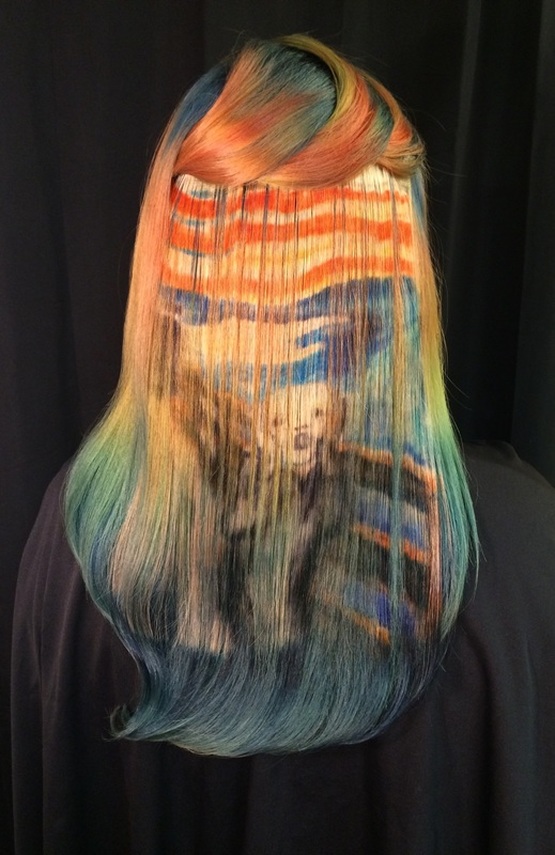


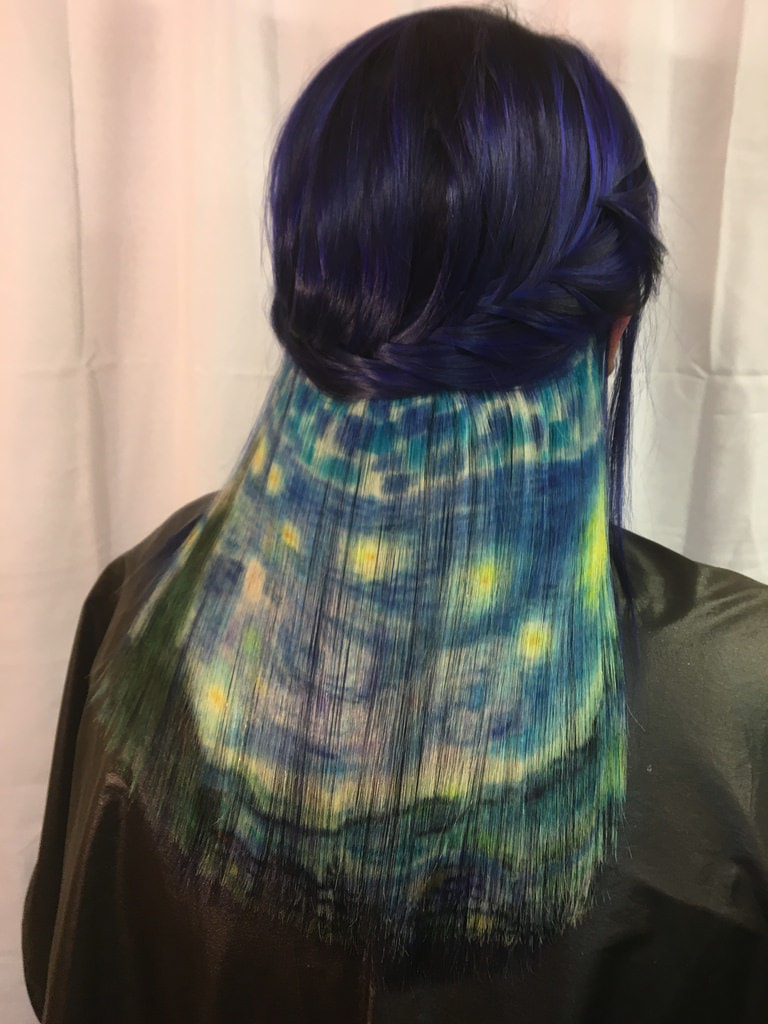

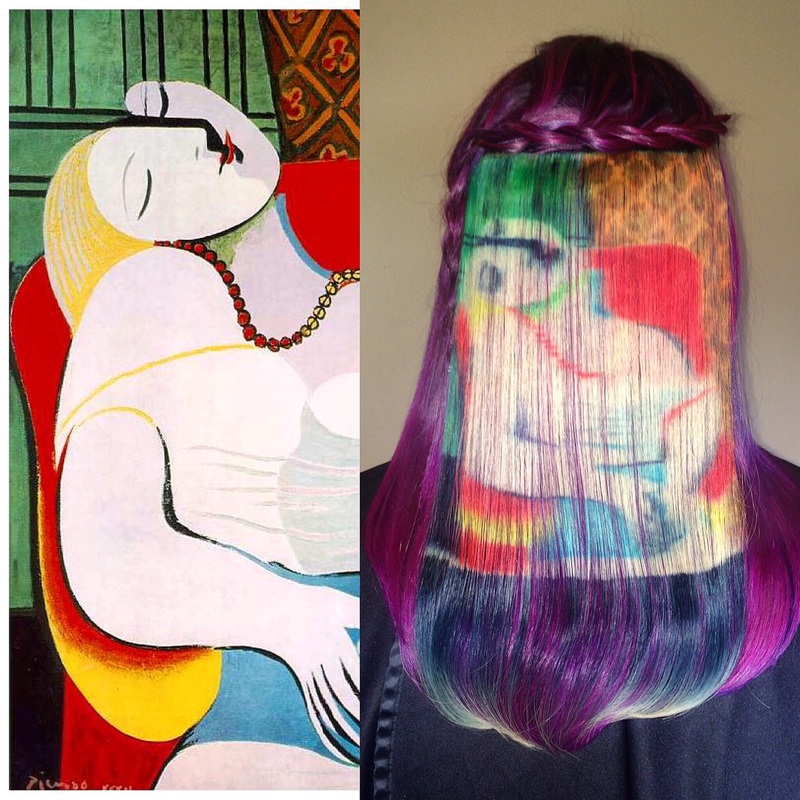

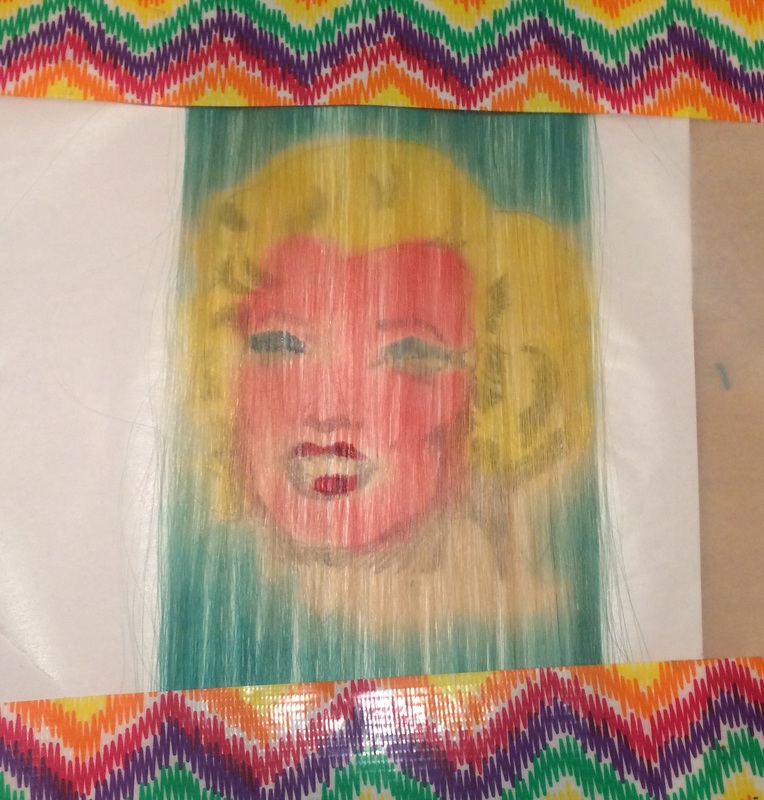

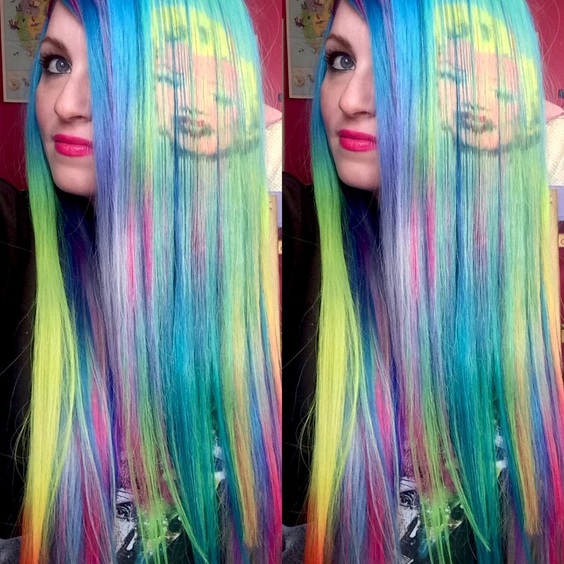


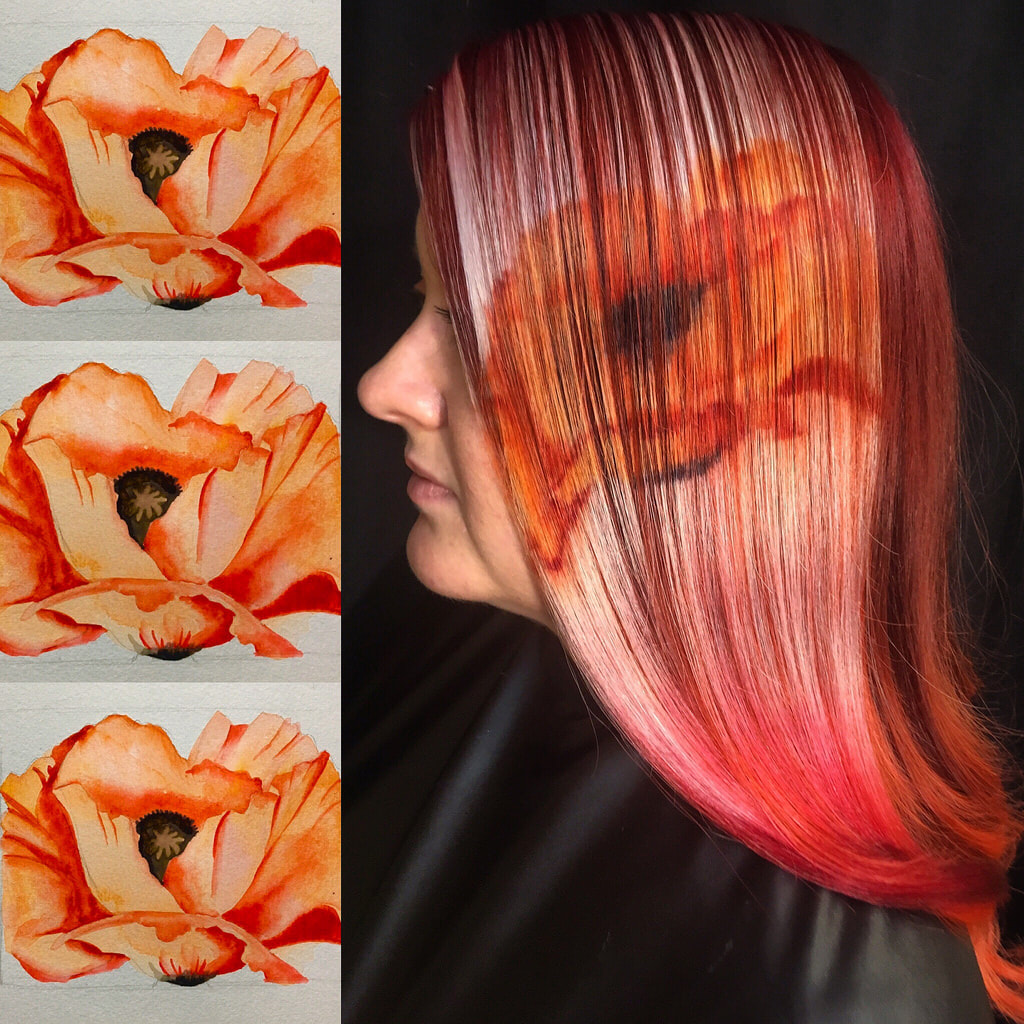
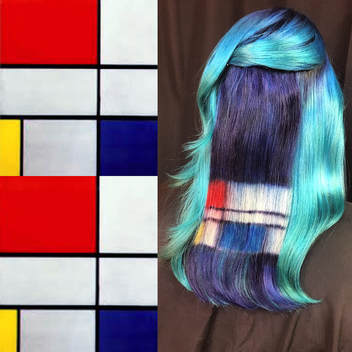
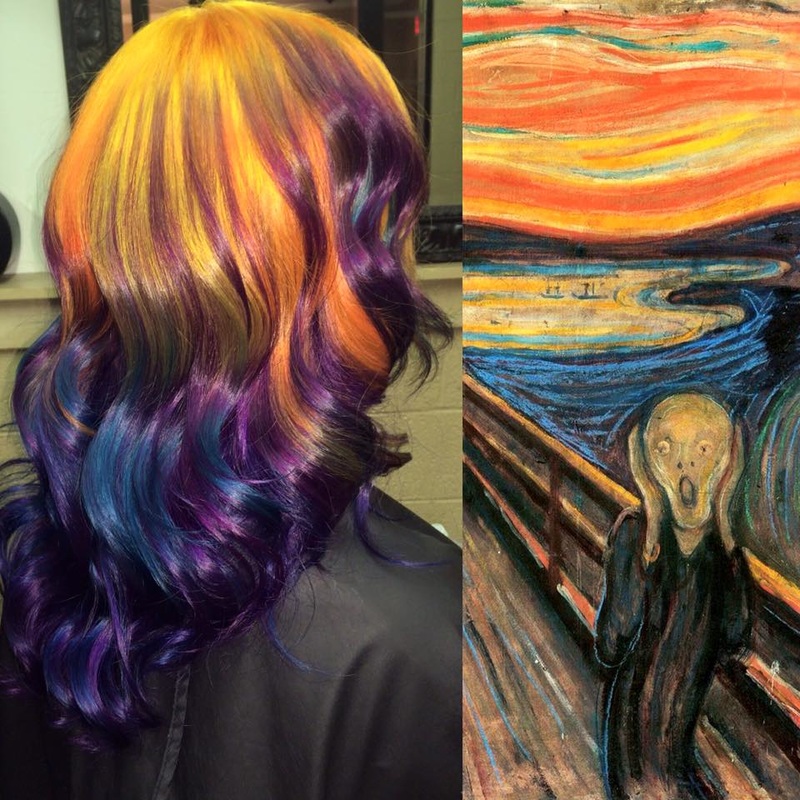

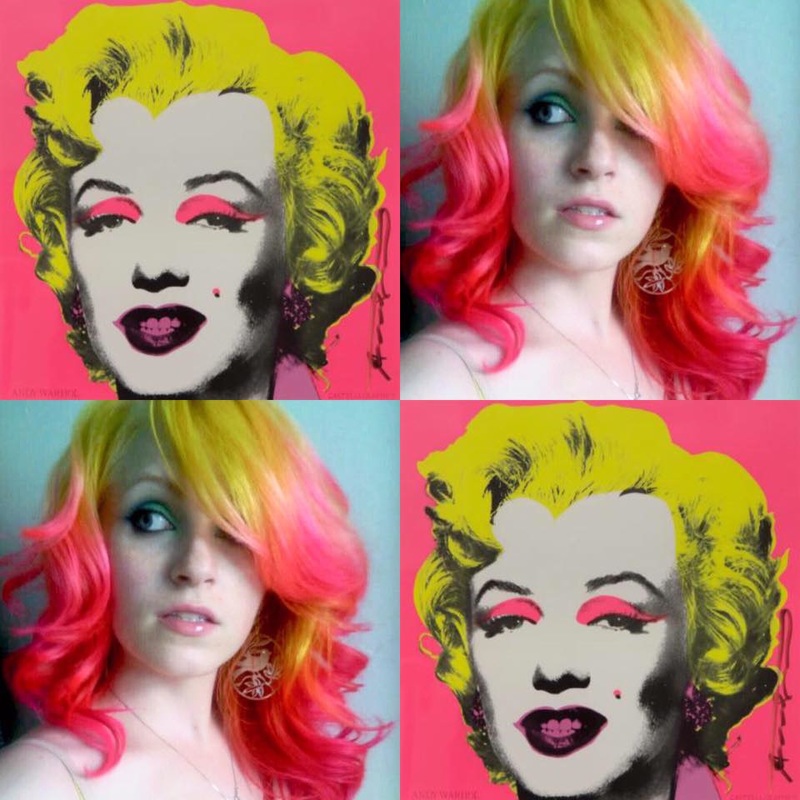
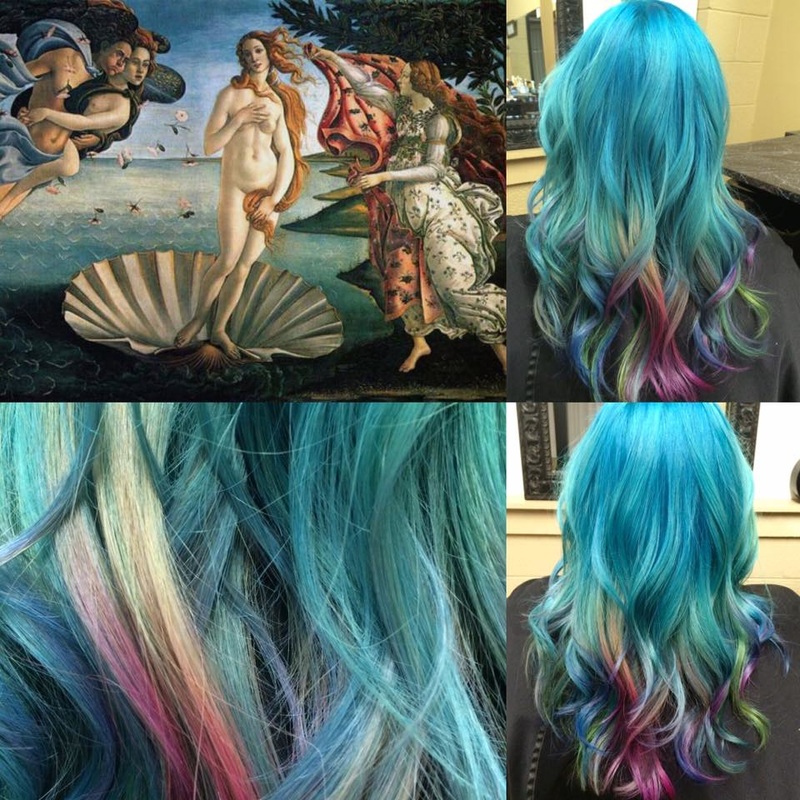
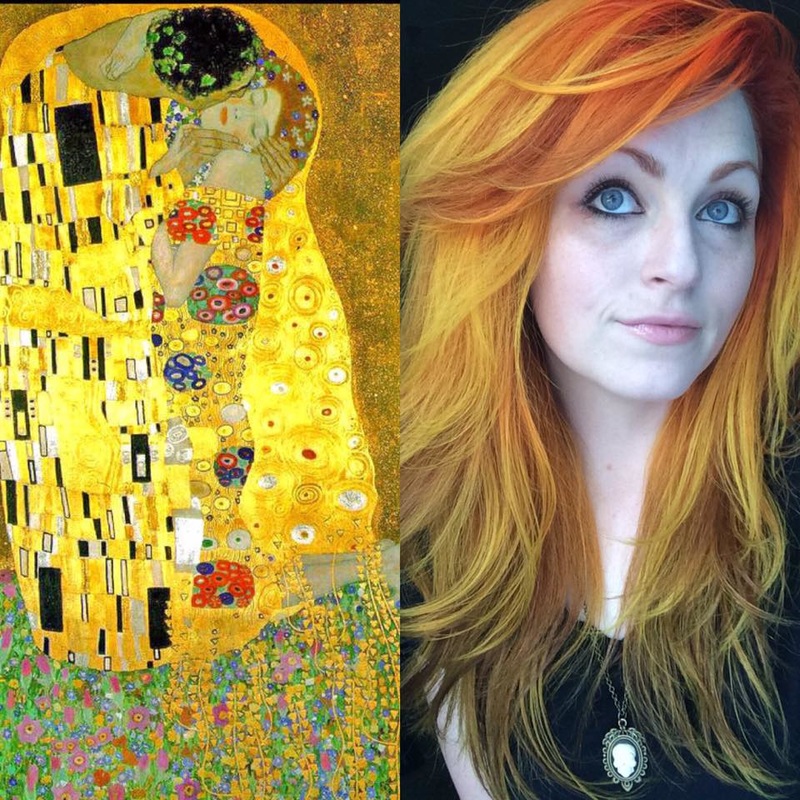
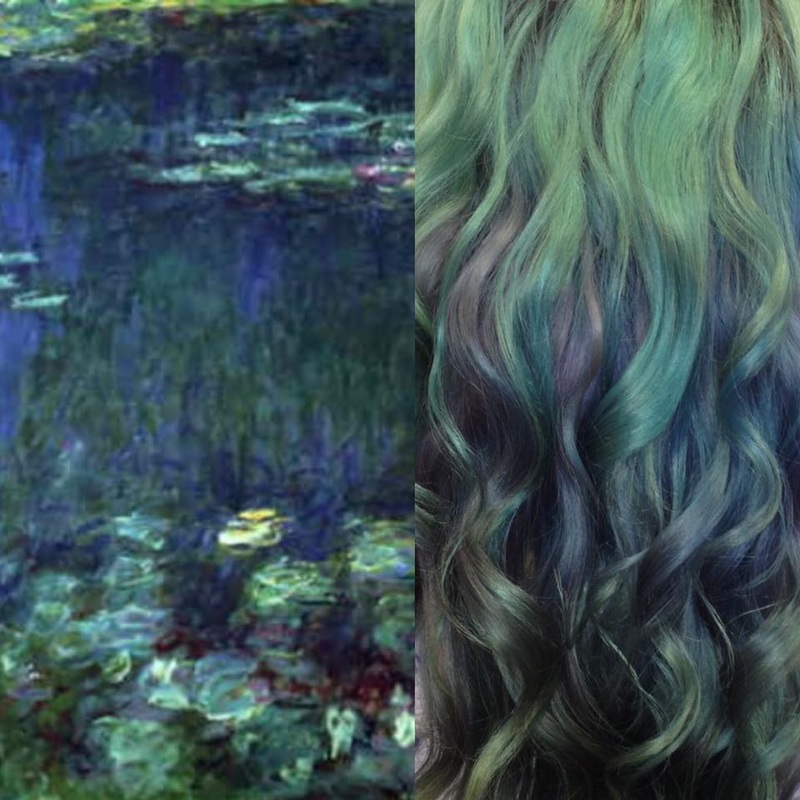


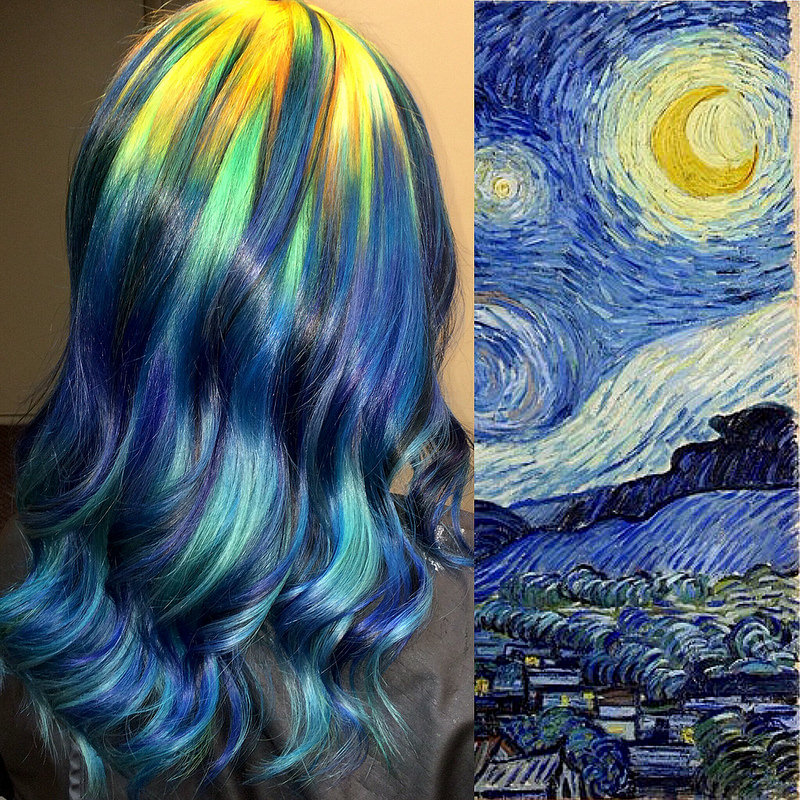
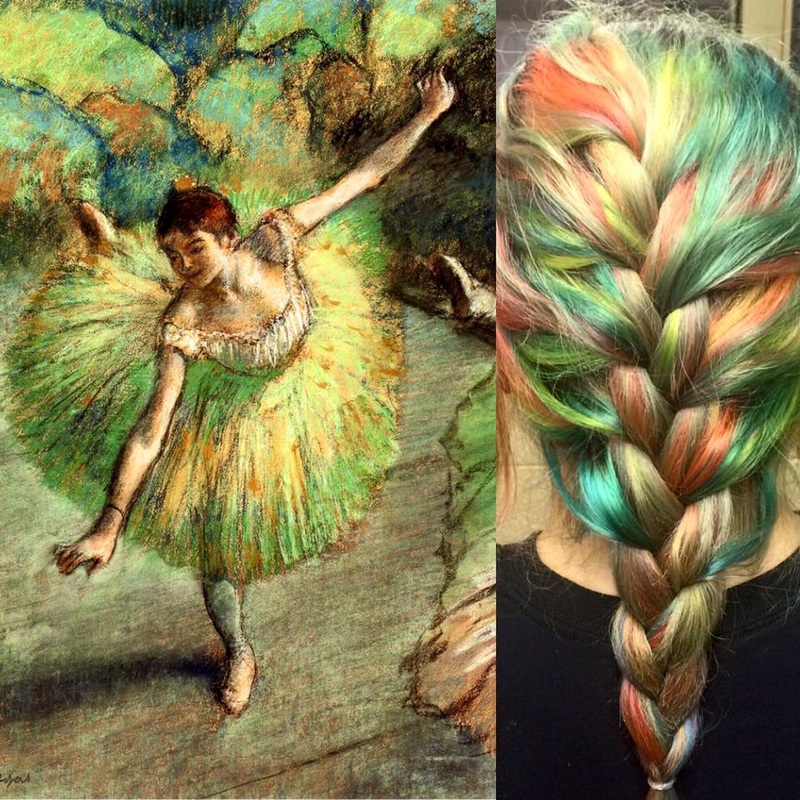


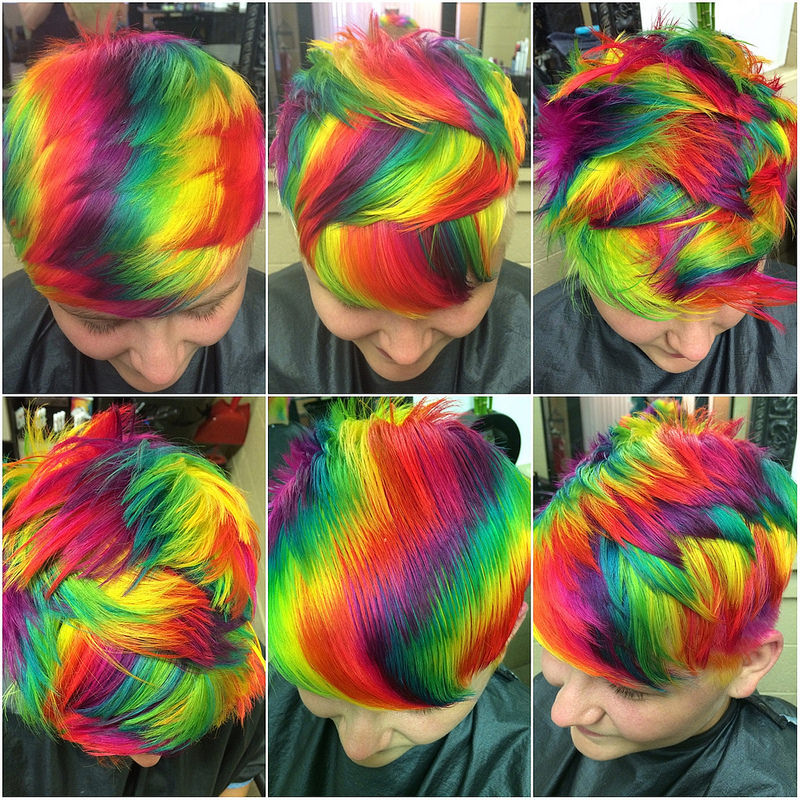
 RSS Feed
RSS Feed